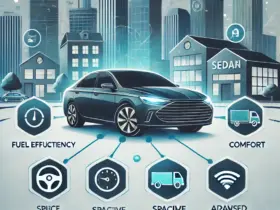Key Takeaways:
- Always prioritize safety when jumping a vehicle battery.
- Ensure you have the necessary tools and know the correct procedures.
- Understand common pitfalls to avoid mishaps.
- Regular maintenance can prevent battery failure and extend lifespan.
Importance of Safety When Jumping a Car
Jumping a car battery can be daunting, especially if you’re inexperienced. However, understanding the safety protocols protects you and your vehicle. First and foremost, it’s crucial to gather a sound understanding of how to jump a car correctly without risking damage or injury. A systematic approach minimizes the chances of accidental harm or missteps during the process.

Car batteries contain sulfuric acid and can emit hydrogen gas, a flammable substance. This combination makes it essential to approach them with caution. Protective gear such as gloves and goggles can shield you from accidental splashes or sparks, reinforcing safe practices. Additionally, ensuring the car is parked on a flat, stable surface prevents potential movement during the jump-start, increasing overall safety.
Gathering Necessary Tools
Jumper cables are essential to safely jump-start a vehicle. Opt for long, heavy-duty cables, which provide reliable performance with thick gauges for better conductivity. A portable jump starter can also be a handy alternative, especially in isolated areas where another vehicle might not be accessible. It’s a worthwhile investment for those frequently traveling in remote or less-populated areas. If you’re looking for heavy duty cooling be sure to visit Natrad.
Safety gear like goggles and gloves is non-negotiable. These basics protect your eyes and hands from potential hazards, ensuring a safe environment as you work. Keep these in your vehicle for easy access whenever the need arises. Additionally, carrying a flashlight can aid in inspecting battery terminals in low-light conditions, which is often an overlooked yet crucial detail in ensuring successful connections.
Proper Jump-Start Procedure
Executing the jump-start correctly is key to avoiding unnecessary risks. Start by identifying and accessing the batteries of both vehicles by opening the hoods and securing them. Position the assisting vehicle close, yet not touching, to ensure adequate cable length without risk of collision during start-ups. Both vehicles should be off, with keys removed to prevent accidental starts.
Connect the red clamp to the dead battery’s positive terminal first, ensuring a secure grip to avoid accidental detachment. Then connect the other red clamp to the live battery’s positive terminal. Place the black clamp on the negative terminal of the charged battery, with the other end securely clamped onto a grounded metal part of the other car. This connection should be away from the battery to prevent sparking.
After ensuring all cables are secure, start the charged vehicle, allowing it to run for a few minutes to allow the charge to transfer to the dead battery. Attempt to start the stalled vehicle. If successful, reversely remove the cables to prevent battery damage or electric shock. Leaving the jumped vehicle running for at least 20 minutes can help recharge its battery, minimizing the risk of another failure shortly.
Common Mistakes and How to Avoid Them
Jump-starting can be straightforward if common mistakes are avoided. One needs to neglectpaying attention to turn off all unnecessary electrical components, such as lights and car audio systems, which can further drain the charging battery. Ensuring everything is off reduces this burden significantly, allowing more effective energy transfer during the start-up process.
Another error is cable misplacement. Reversing polarity by attaching cables to the wrong terminals can damage vehicle electronics and batteries and lead to dangerous sparks or overheating. Regularly reviewing proper techniques and paying close attention to the color-coded clamps ensures this simple misstep is avoided, maintaining the health of your vehicle’s systems. Double-checking connections before starting either vehicle can prevent these costly errors.
Extra Tips for Battery Maintenance
Maintenance is crucial for extending a battery’s lifespan. As noted by experts on Consumer Reports, regularly cleaning terminal contacts can prevent corrosion-related issues and improve performance. Applying anti-corrosion sprays or petroleum jelly can protect terminals from rust and buildup, supporting better conductivity.
Testing your battery’s charge levels annually or before long trips can help preemptively address potential issues before they become problematic. Many auto shops offer free battery testing services, providing a reliable assessment of your battery’s health. Additionally, understanding climate impacts and adjusting, such as parking in shaded areas during hot weather or garages during cold spells, can further preserve battery function and reliability. These preventive measures ensure your car is always road-ready, reducing surprises on the road.




